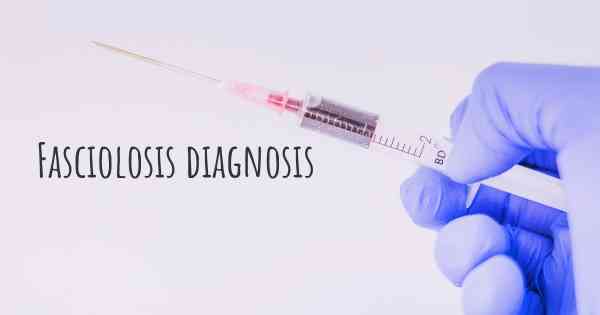How is Fasciolosis diagnosed?
See how Fasciolosis is diagnosed. Which specialists are essential to meet, what tests are needed and other useful information for the diagnosis of Fasciolosis

Fasciolosis is a parasitic infection caused by the liver fluke Fasciola hepatica. It primarily affects livestock, but can also infect humans. Diagnosing fasciolosis involves a combination of clinical evaluation, laboratory tests, and imaging techniques.
Clinical Evaluation: The first step in diagnosing fasciolosis is to assess the patient's medical history and symptoms. Common symptoms include abdominal pain, fever, nausea, vomiting, and weight loss. The presence of risk factors such as consumption of contaminated water or raw aquatic plants can also aid in the diagnosis.
Laboratory Tests: Several laboratory tests can be performed to confirm the diagnosis of fasciolosis. These include:
- Stool Examination: A stool sample is examined for the presence of Fasciola eggs. However, this method may not be reliable in the early stages of infection as it takes time for the flukes to start producing eggs.
- Serological Tests: Blood samples are tested for the presence of specific antibodies against Fasciola. Enzyme-linked immunosorbent assay (ELISA) and Western blot are commonly used serological tests.
- Eosinophil Count: Eosinophils are a type of white blood cell that increases in response to parasitic infections. An elevated eosinophil count in the blood can indicate fasciolosis.
Imaging Techniques: Imaging techniques can be helpful in visualizing the liver and detecting any abnormalities caused by the flukes. These include:
- Ultrasound: Ultrasound imaging can reveal the presence of liver flukes, their movement, and any associated damage to the liver.
- Computed Tomography (CT) Scan: CT scans provide detailed cross-sectional images of the liver, allowing for a more precise evaluation of the extent of the infection.
- Magnetic Resonance Imaging (MRI): MRI scans use magnetic fields and radio waves to create detailed images of the liver, aiding in the diagnosis of fasciolosis.
It is important to note that a combination of these diagnostic methods is often used to increase the accuracy of the diagnosis. Additionally, consulting with a healthcare professional experienced in parasitic infections is crucial for an accurate diagnosis and appropriate treatment.








